XMM-NEWTON LAUNCH VIDEOS
 ).
).
XMM-Newton Hoisted Aboard the Launch Vehicle

XMM-Newton lifted to the top of Ariane 504 in preparation for launch.
XMM-Newton and the Ariane Launcher
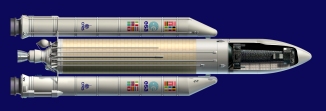
Artists conception of the XMM-Newton satellite mounted on a cutaway of the Ariane launcher.
XMM-Newton on the Launch Pad
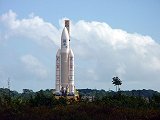
XMM-Newton and Ariane 504 prior to launch.
Ariane 504 Launch

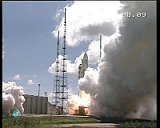
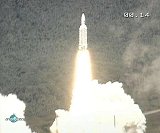
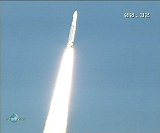
Ariane 504 blasts off at 14:32UT 10 Dec 1999 from Kourou, French Guiana.
Fairing Separation From the Ariane Launcher
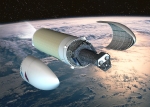
Artists conception of the launcher fairing separation. Separation of XMM-Newton from the Ariane 504 launch vehicle occured 29:10 minutes into the flight at an altitude of 826 km. The first burn on the on-board Hydrazine boosters lifted perigee to 4 900 km, a second to the nominal 7 000 km of operational orbit and a third burn lowered the apogee to 114 000 km.
On-board Cameras Image XMM-Newton 5 Hours After Launch

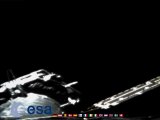
On board Visual Monitering Cameras (VMCs) pointed along the telescope tube towards the service platform reveal that the solar arrays have deployed successfully. At this time XMM-Newton was along its first orbit, 55 300km above the Earth.
XMM-Newton with an Earth backdrop
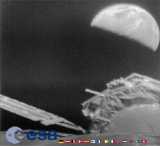
On 2000 February 16 the VMCs caught this image of the observatory during a test pointing away from Earth on orbit 35, at an altitude of 50,000 km.
If you have any questions concerning XMM-Newton send email to xmmhelp@athena.gsfc.nasa.gov



